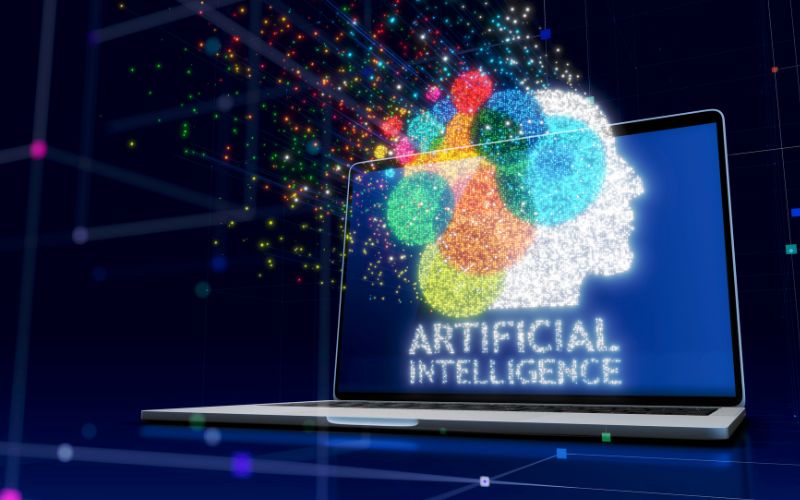Executive Summary:
The fashion industry is one of the 89% of businesses in all industries switching to digital technologies. According to McKinsey, fashion brands and businesses invested roughly 1.7% of their earnings in developing technologies in 2021. Furthermore, they predict that by 2030, the number will increase by 3.0% to 3.5%.1
Digital technologies in fashion include blockchain, non-fungible tokens (NFTs), and artificial intelligence (AI). But although though generative AI is still a young field, it has already begun to impact several aspects of the fashion business.
The significance of Generative AI in the fashion industry and its top use cases are discussed in this article.
Generative AI: What is it?
A family of machine learning algorithms called “generative AI” is created to produce fresh, original material from input data.
Generative AI is used to create text, graphics, music, codes, and even entire websites, among other things. In addition, Generative AI, such as AI-driven generative adversarial networks (GANs), may carry out imaginative activities previously regarded as exclusive to humans. For example, these potent machine-learning models can produce outputs like lifelike photos, movies, and voices.
What are the benefits of generative AI for the fashion industry?
The fashion business needs generative AI because it has several advantages. It can increase consumer happiness and make it possible for online shops to sell generative items more quickly and affordably by:
- Adding diversity and individuality to fashion designs
- By using generated models, more body kinds will be represented.
- Creating an automated digital purchasing experience
GANs provide an effective technique to produce new product ideas at a minimal cost in the fashion retail sector. Aesthetics and consumer enjoyment are essential aspects of product design, and speed and novelty are crucial. Watch the video below to learn how GANs are put to work as generators.
Understanding the use cases of Generative AI
The entire fashion value chain can benefit from foundation models and generative AI.
Consumer Data Privacy Protection
Generative AI can help the fashion sector protect customer data. Fashion companies may create new designs using generative AI algorithms while protecting client information. Companies can develop distinctive patterns and automated data analytics with synthetic datasets that generative AI generates while safeguarding consumer information, such as:
- Information about contacting customers
- banking information
- previous purchases
- preferences, and more from outside sources.
Without violating people’s privacy, it protects financial security for individuals and offers businesses insightful data about their target market. In this approach, generative AI gives fashion firms a safe way to revolutionize their business model.
Fashion Brand Marketing & Trend Analysis
Companies may accelerate and enhance their trend-predicting and marketing analytics capabilities with the help of AI-powered generative models. As a result, companies can better anticipate trends and better serve customers’ future demands.
Analyzing trends can be supported by the following:
- It combines several methods, including probabilistic programming and machine learning. In the fashion industry, these methods enable potent generative models that consider customers’ preferences.
- They are creating highly customized solutions that go above and beyond what conventional analytics and customer demand algorithms can do for unique consumer desires.
Additionally, it enhances marketing ability by:
- We combine data analysis, machine learning, and natural language processing to produce a highly customized and personalized product line for the intended market.
- To engage a particular person, it is important to create emails, website pages, captions, and ad copy specifically suited to their interests and preferences.
- Preparing marketing and ad content that is authentic and interesting, that is likely to dominate search results.
Making Color Images Out of Sketches
The fashion sector benefits from generative AI since it can turn sketches into fully colored visuals. With little effort, designers and artists may experience their vision in real-time thanks to generative AI (see Figure 4). Thanks to this technology, they can experiment without difficulties and conserve critical time and resources.
Additionally, generative AI can reduce human error, such as pattern and color-matching mistakes. Additionally, it can help fashion firms be more inventive by allowing them to analyze many sketch-to-color combinations and produce various alternatives for evaluation.
As an illustration, Khroma technology enables a trained algorithm to produce true and unique color palettes. Similarly, Colormind allows you to create original color palettes based on your favorite images from movies, photos, artwork, etc.
Aside from reducing the need for physical samples and saving time and resources, generative AI can also aid in this effort.
Closure:
One method of producing synthetic data, manufactured rather than collected from direct observations of the real world, is through generative AI. This guarantees the confidentiality of the data sources used to train the model. Overall, Generative AI in the fashion industry has a promising future, with many interesting innovations and job prospects. However, it will be critical to weigh the potential advantages with the moral and social ramifications as technology develops and work towards a time where Generative AI in the fashion industry is utilized responsibly and for the benefit of society.
Moreover, the entire fashion ecosystem may be influenced by generative AI. The fashion industry can use technology to develop more marketable designs, lower marketing expenses, hyper-personalize client communications, and expedite procedures. Additionally, it may alter shop operations, organization and support services, supply chain, logistics, and supply chains.

Dawood is a digital marketing pro and AI/ML enthusiast. His blogs on Folio3 AI are a blend of marketing and tech brilliance. Dawood’s knack for making AI engaging for users sets his content apart, offering a unique and insightful take on the dynamic intersection of marketing and cutting-edge technology.









